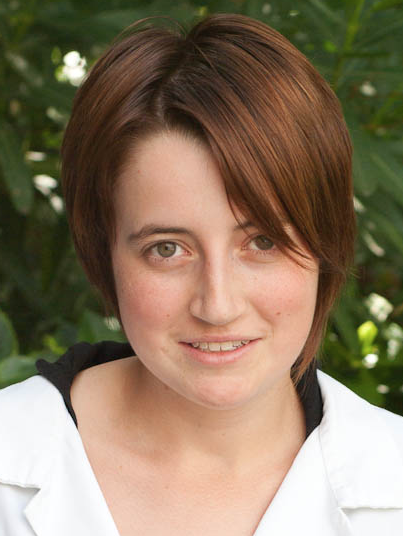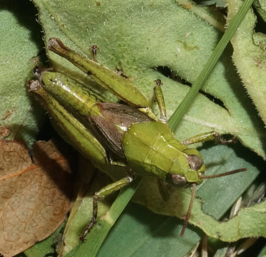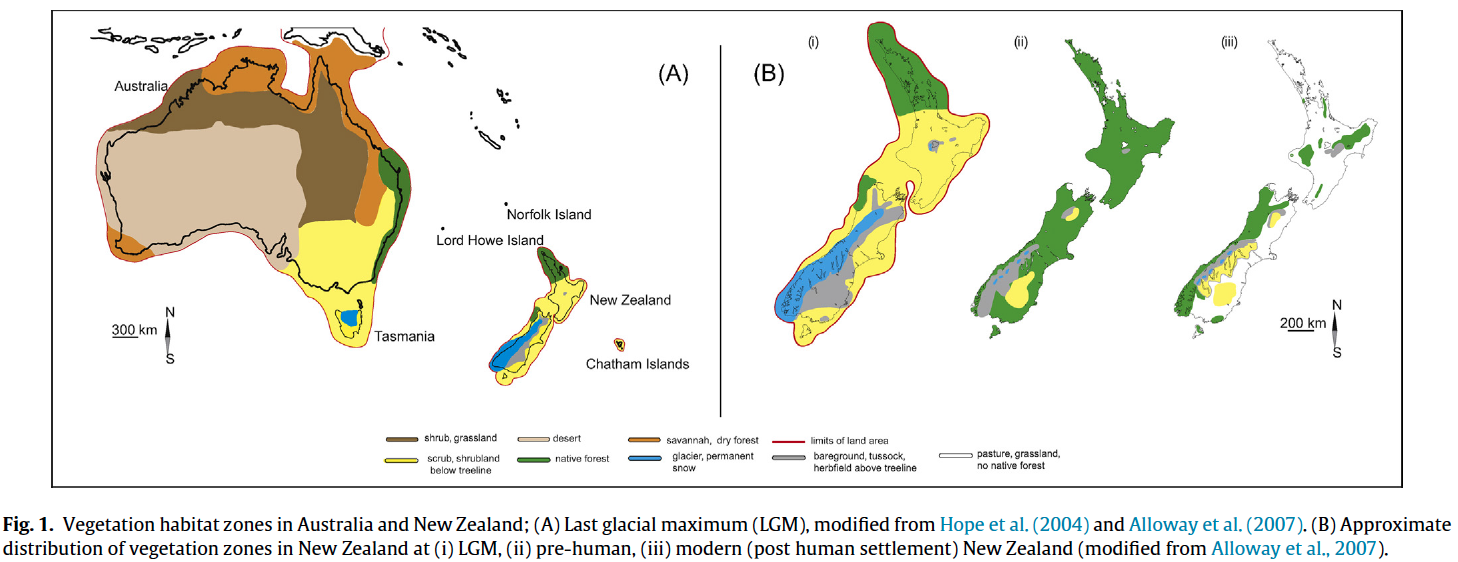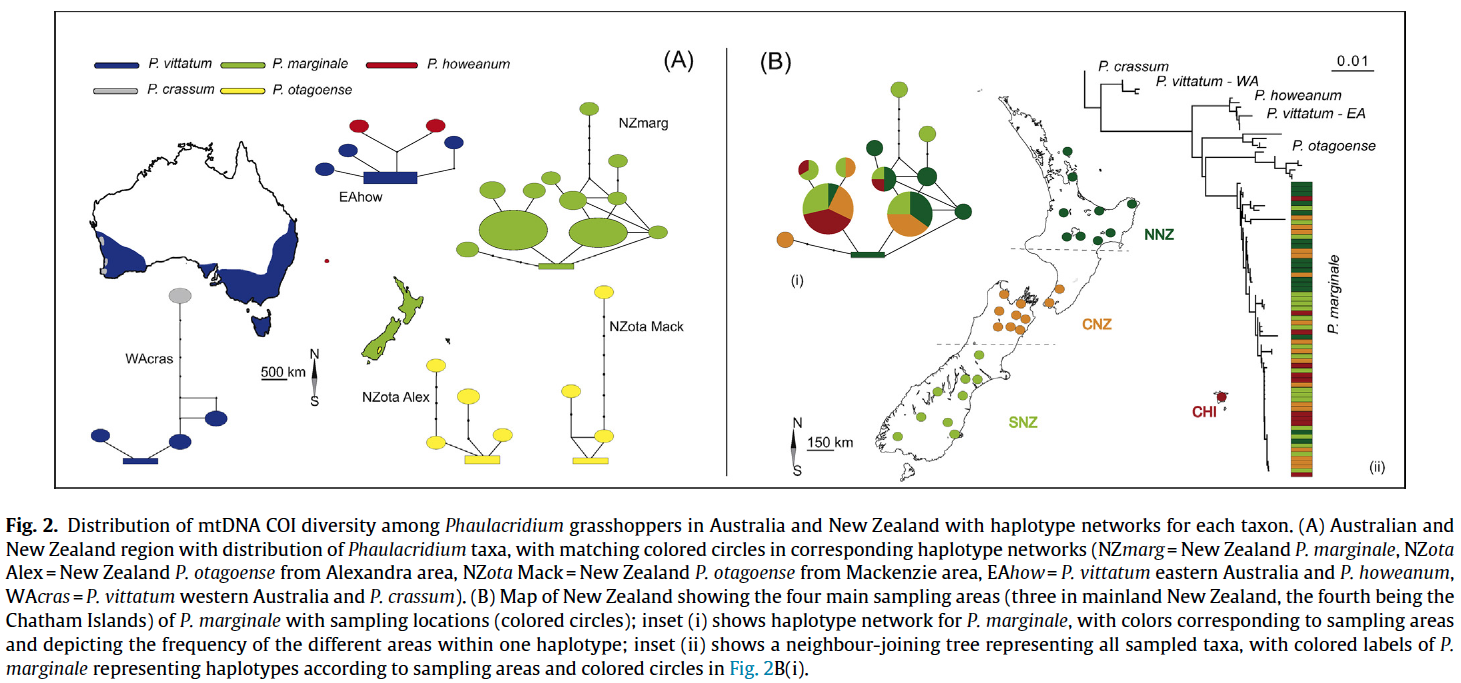|
|
| |
About myself:
I grew up in the Bay of Islands and knew from a young age I wanted to work with animals in some way. During the last few years of high school I became interested in evolution especially how past events, such as the Last Glacial Maximum (LGM), influenced the species we see today. In 2013 I completed a Bachelor of Science with a double major in Zoology and Genetics. I have recently submitted my thesis for my Master of Science in Zoology. During the 2013/2014 summer I was selected to for a summer student scholarship in the Institute of Environment and Agriculture, working with Mary Morgan-Richards and Steve Trewick on tree weta molecular ecology.
Scholarships and Awards:
Theodore J. Cohn Research Grant from the Orthopterist’s Society (2015)
IAE Summer Student Scholarship (2013-2014) |
| My Research: |

My MSc research was a study of the evolutionary and ecological interactions of New Zealand Phaulacridium grasshoppers using a combination of spatial, climatic, morphological and phylogeographical data. There are two species of Phaulacridium endemic to New Zealand, the larger P. marginale recorded throughout New Zealand and many offshore islands while the other, P. otagoense, is restricted to semiarid habitat in central/southern South Island.
Using an exhaustive search of grey literature and science publications I collated records of occurrence for P. marginale and P. otagoense (Fig. 1a,b) and used species distribution models to estimate the potential distribution and environmental envelope of each taxon (Fig. 1c,d). I then characterised specimens into morphotypes based on species diagnostic characters described by Westerman and Ricthie (1984) and morphometrics of the pronotum shape to cluster specimens.
Environmental envelopes suggested that P. otagoense would have had a larger population size in the past than P. marginale, predicting contrasting levels of genetic diversity in the two species. However, morphometric data suggested gene flow between the two species might be occurring, predicting genetic introgression. I tested these predictions using mtDNA sequence from population samples from throughout the range of both species.
Demographic history analysis suggests that the wide range of P. marginale resulted from recent population expansion because low genetic diversity is best explained by small population size. In contrast, P. otagoense has a restricted spatial range today, but higher genetic diversity suggests that this species was until recently represented in large populations. Larger population size is suggestive of a more extensive spatial range than today.
Evidence of genetic introgression came from the mismatch between morphological and genetic data. All North Island and northern South Island populations sampled consisted of individuals inferred to be P. marginale. However, within the samples from the nine southern South Island locations there was a mixture of Phaulacridium types (Fig. 2). Southern South Island populations consisted of grasshoppers classified as P. marginale, P. otagoense, and putative hybrids.
Comparison of morphological and genetic data demonstrates the first reported case of introgression between P. marginale and P. otagoense. It is evident that Phaulacridium hybrids exist in the wild, but it is unknown whether these hybrids are F1 and fertile. Lindis Valley and Lake Dunstan areas appear to be the last strongholds of P. otagoense. Based on historical records of the distribution and the results of the current study, it seems that P. marginale is steadily replacing P. otagoense and this may be facilitated by human modification of landscape and vegetation.
|
|
|
From Goldberg et al. 2015


|
|
|